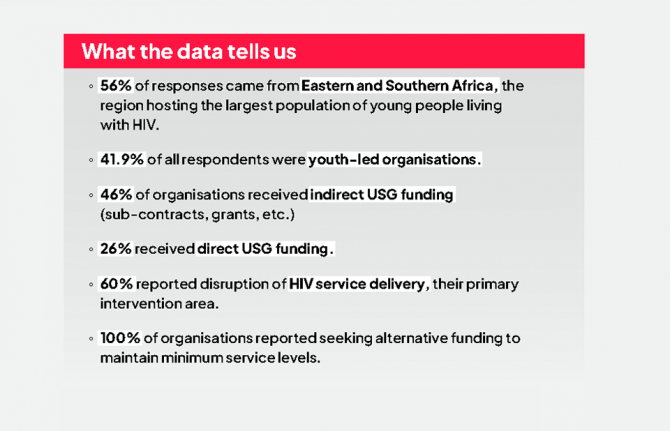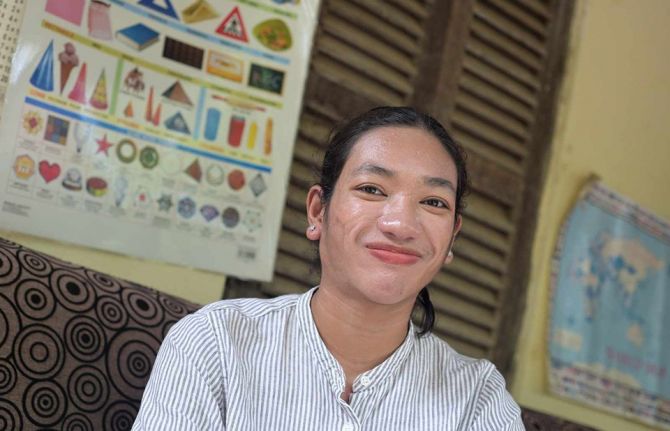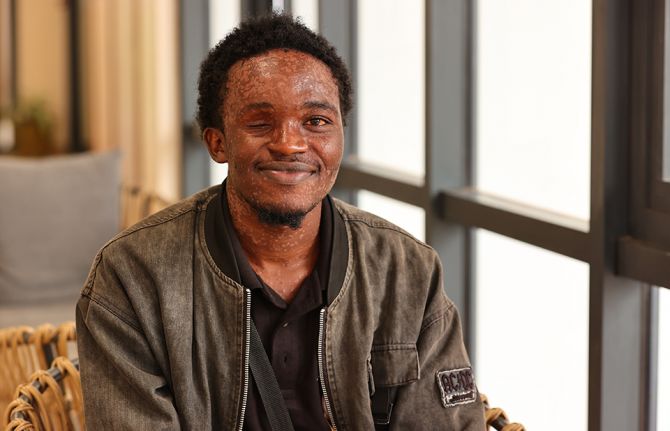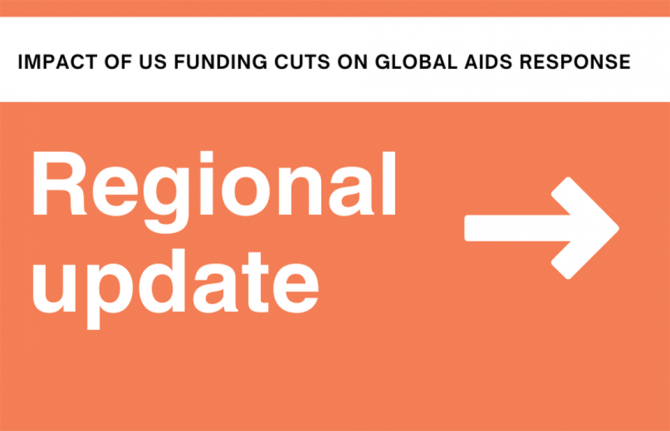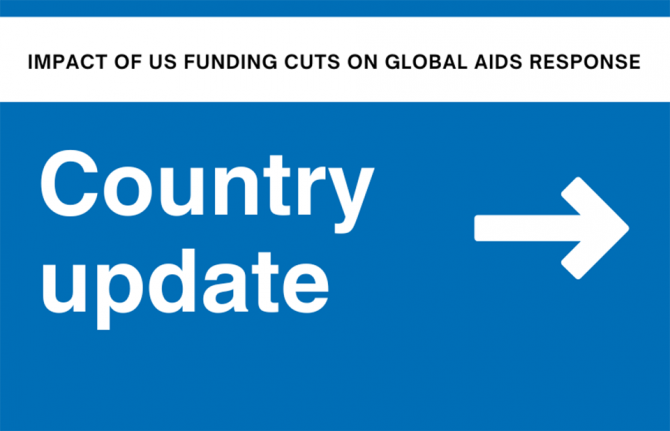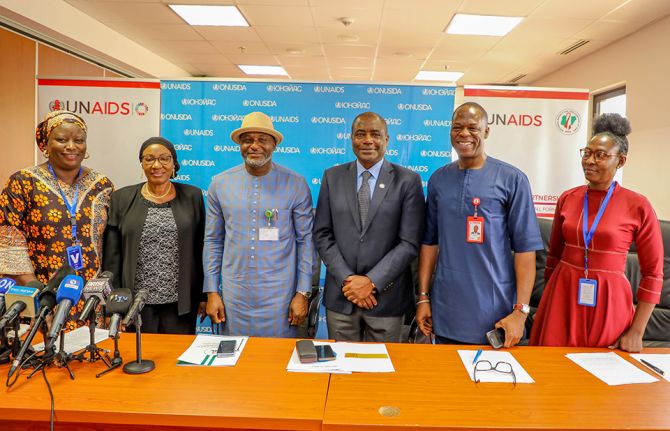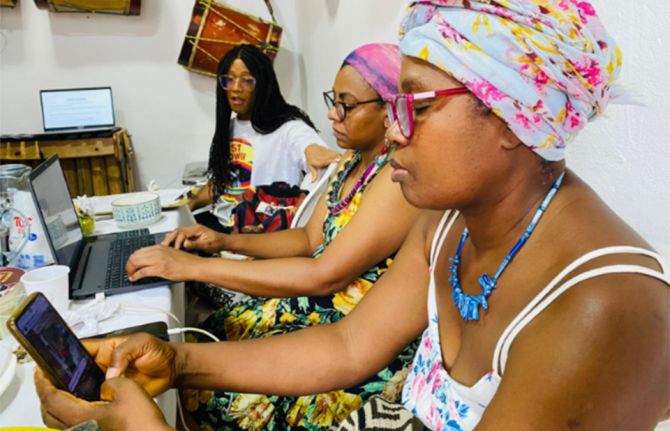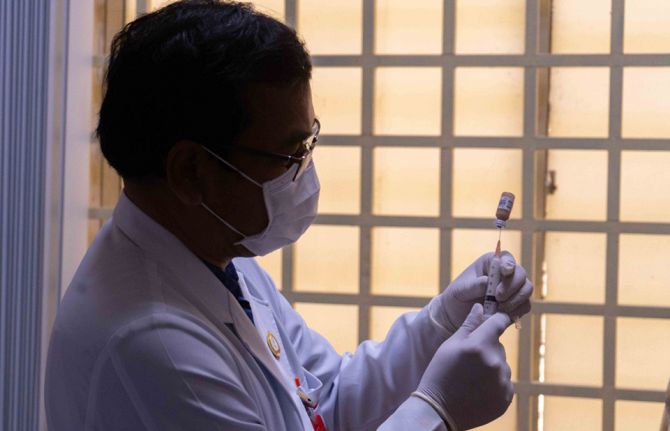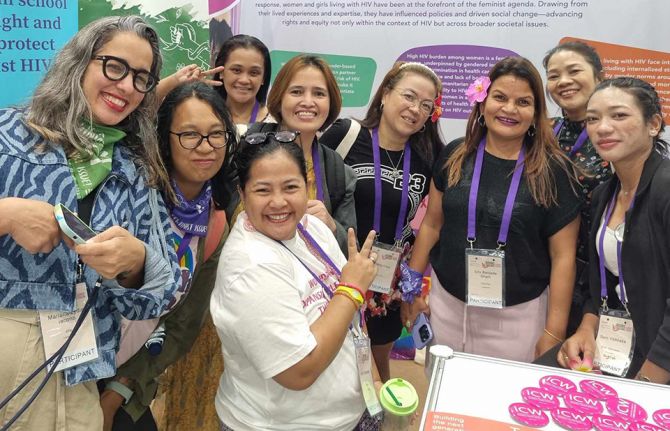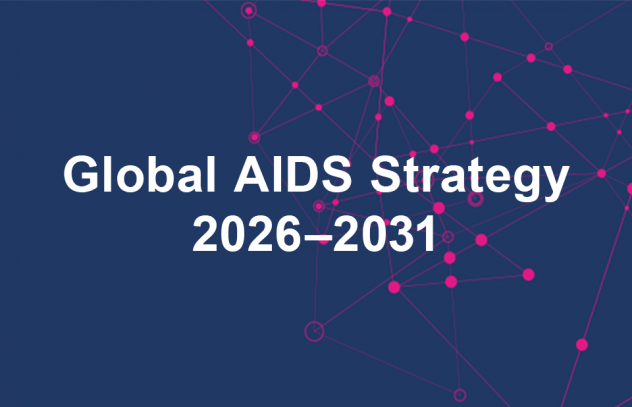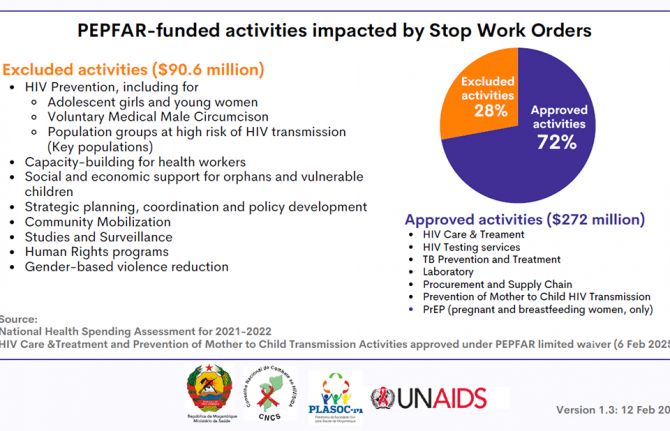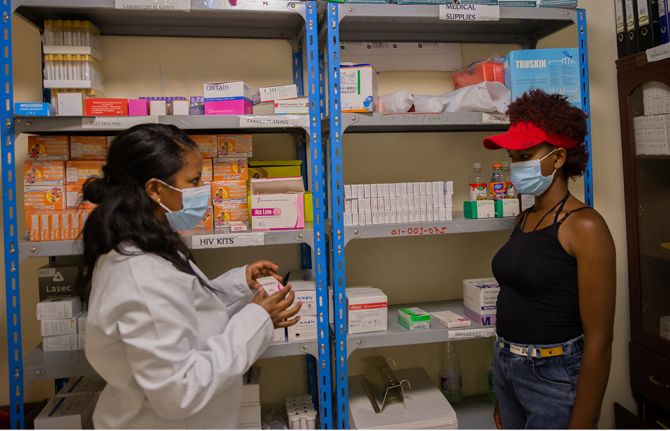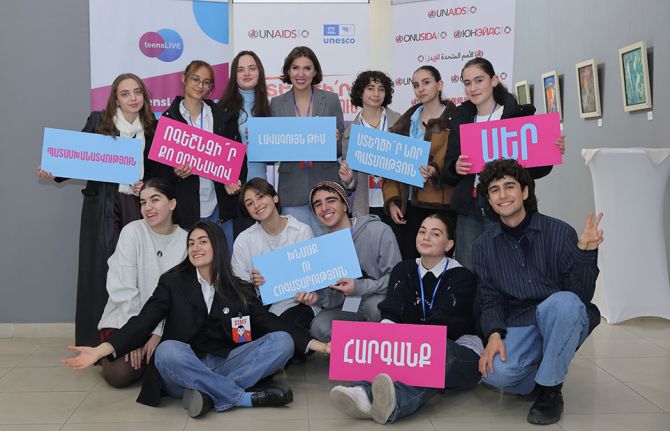
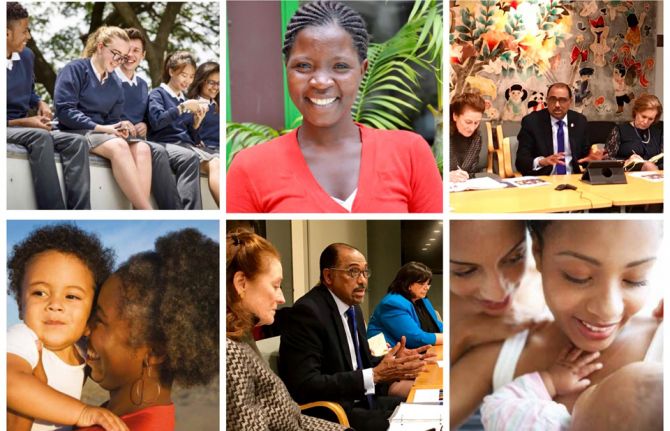
Feature Story
H6 commits to accelerate results for health
26 March 2018
26 March 2018 26 March 2018The H6 combines the strengths of six international organizations to help countries to realize the United Nations Secretary-General’s Every Woman Every Child strategy. The partnership mobilizes political commitment and resources to transform societies so that women, children and adolescents can realize their rights to the highest attainable standards of health and well-being.
High-level representatives of the six organizations met in New York, United States of America, to shape a shared vision for the H6. During the meeting, which took place on 21 March, health leaders committed to jointly deliver more and faster results in countries.
The Chair of the H6, Michel Sidibé, shared his vision for the partnership, including how it can evolve to meet the demands of the Sustainable Development Goals, including in humanitarian settings, and be a leading platform to advance United Nations reform.
“As a transformative platform, I see the H6 as an outstanding opportunity to rapidly bring United Nations reform to life and deliver results for every woman, child and adolescent on the ground,” said Michel Sidibé, Executive Director of UNAIDS.
The participants were united in their ambition to make the H6 a one-stop shop for countries for strategic policy advice, technical assistance and strategic information. Adolescent health, particularly for 10–18-year-olds, was discussed as a key focus area.
“I see an effective H6 partnership as an important way to drive health impact at the country level for all children, including by better addressing gaps in services for the age group from 10 to18 years old, and by planting the seeds of development in humanitarian contexts,” said Henrietta Fore, the Executive Director of the United Nations Children’s Fund.
The participants also committed to ensure policy-making in which communities have a voice and decided to build innovative partnerships with stakeholders beyond the United Nations.
Enhanced transparency and accountability of the H6 and reducing fragmentation and duplication in the United Nations system, as well as between the United Nations and the World Bank, will be key to success, as will a strong focus on joint reporting of results. The H6 will also work in close collaboration with the Global Financing Facility and the Partnership for Maternal, Newborn & Child Health.
“The United Nations Population Fund is strongly committed to the H6 partnership, which has proven that working in close collaboration and bringing different expertise and experience to the table is not only effective in enabling countries to deliver quality care for the women and girls left furthest behind, but also ensures strong country ownership,” said Natalia Kanem, the Executive Director of the United Nations Population Fund.
The H6 principals will now develop a results framework and reconvene in May to review and endorse it. They are aiming to adopt a road map to roll out new ways of working by mid-year.
Related
 “Who will protect our young people?”
“Who will protect our young people?”

02 June 2025

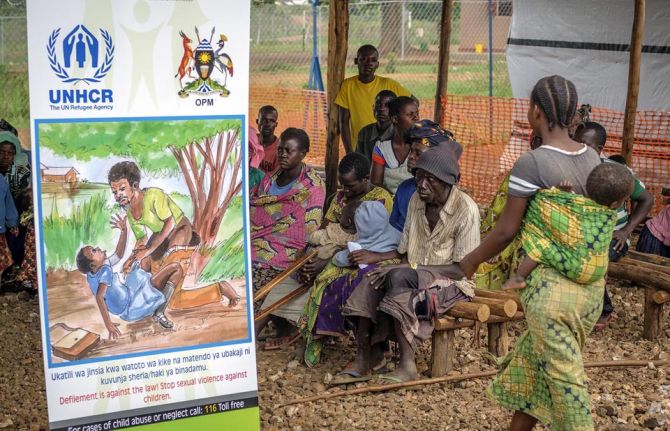
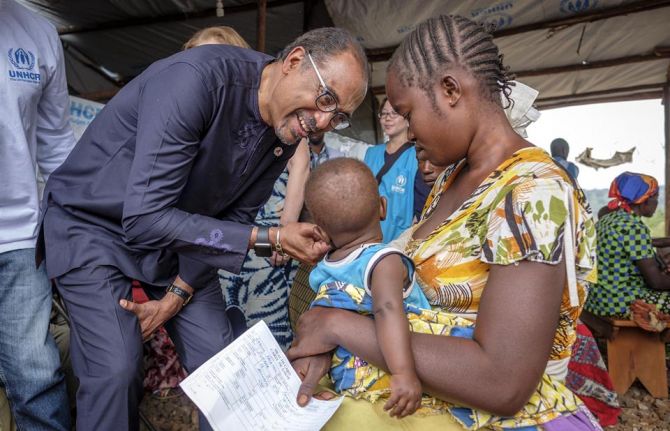
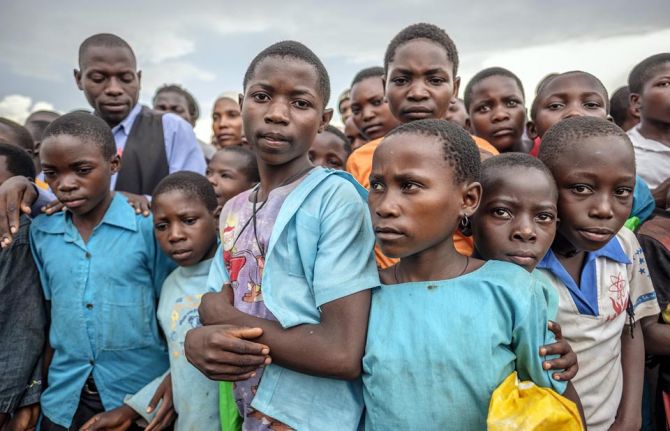
Feature Story
Africa’s welcome mat: stories of hope and resilience from refugees in Uganda
29 March 2018
29 March 2018 29 March 2018“Right now, I just want to go to a country where there is peace,” says a young student who fled the conflict in his home country, the Democratic Republic of the Congo. His new home is Kyangwali Refugee Settlement Area in the Hoima District of Uganda—the place that will give him a chance to fulfil his dream of a peaceful life.
The Kyangwali Refugee Settlement Area lies on the banks of Lake Albert on the border between southern Democratic Republic of the Congo and northern Uganda. Most of the refugees in Kyangwali are fleeing interethnic conflict in eastern Democratic Republic of the Congo and making the perilous journey into Uganda on fishing boats across Lake Albert. Since January 2018, approximately 59 000 people have made the crossing. On a normal day 500 refugees arrive; on a busy day it can be as many as 2000.
Families arrive with whatever personal belongings they can carry—from mattresses and cookware to valuables, such as solar panels, piled high among the passengers in the boats. The boat ride can take as little as six hours if people travel in a motorized vessel or as much as 12 hours if they travel by canoe. “Boats sometimes run out of fuel in the middle of the lake and Ugandan marine police have to bail them out,” says Bornwell Kantande, Representative of the Office of the United Nations High Commissioner for Refugees in Uganda. “Other boats have capsized from overloading—at the peak of the influx of refugees as many as 200 people would pile onto a single canoe.”
Upon arrival at the Kyangwali reception centre, refugees are registered by aid workers and given a wristband for identification purposes. They receive high-energy biscuits and water and those who need it are given emergency health care. Refugees stay at the reception centre for a day or two before being transported to the settlement area, where they are allocated a small plot of land and material and equipment to build temporary shelter while they establish themselves.
In a recent visit to the reception centre, Michel Sidibé, UNAIDS Executive Director, witnessed first-hand the health services that are offered to newly arrived refugees at its small makeshift clinic. Here refugees obtain access to emergency health care and are informed about the minimum initial service package for reproductive health, which they receive throughout the different phases of new arrival: border crossing; the short stay at the reception centre; before transportation to the settlement area; and during settlement. Services include HIV testing and tuberculosis screening, prevention of mother-to-child transmission of HIV services, provision of HIV and tuberculosis treatment to people already on it and other sexual and reproductive health services.
During his visit, Mr Sidibé listened to the stories of many refugees, who told him not only of the impact that dislocation has had on their health and their lives, but also of their aspirations and dreams to make a better life for themselves and their families. “I heard stories of sadness, but also of hope and resilience,” says Mr Sidibé.
Uganda is home to the largest refugee population in Africa, with a population of almost 1.4 million refugees in 13 refugee settlements across the country. The majority of refugees are from South Sudan and the Democratic Republic of the Congo, the latter of which has close to five million displaced people—almost as many as in the Syrian Arab Republic.
“It is beyond admirable to selflessly offer refuge to hundreds of thousands of women, children and men who are in need of international protection,” remarked Mr Sidibé. “Uganda’s refugee policy is among the most progressive in the world and is a model for other countries to emulate.”
Region/country
Related

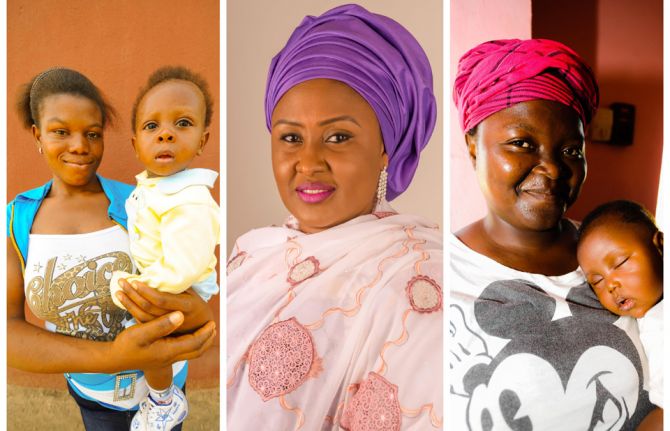
Feature Story
Aisha Muhammadu Buhari to ensure that no child is born with HIV in Nigeria by 2020
26 March 2018
26 March 2018 26 March 2018The wife of the President of Nigeria, Aisha Muhammadu Buhari—the new UNAIDS Special Ambassador for the Elimination of Mother-to-Child Transmission of HIV and the Promotion of Treatment for Children Living with HIV in Nigeria—has vowed to end mother-to-child transmission of HIV in the country.
“It is with a great sense of responsibility and humility that I accept the honour to serve as a UNAIDS Special Ambassador. I am looking forward to using my voice to help ensure that no child is born with HIV in Nigeria by 2020,” said Ms Buhari, upon commencement of her new role.
Nigeria has one of the highest rates of new HIV infections among children in the world. In 2016, an estimated 37 000 [22 000–56 000] children were newly infected with HIV and 24 000 [14 000–37 000) children died of AIDS-related illnesses. Around 270 000 children [180 000–380 000] children were living with HIV in 2016, and just 32% of pregnant women living with HIV had access to antiretroviral medicines to prevent transmitting the virus to their child.
“I am privileged to announce Aisha Muhammadu Buhari’s acceptance of the appointment as UNAIDS Special Ambassador for Nigeria. The trust and respect that she commands in the country will help us to quicken the pace of stopping new HIV infections among children as well as ensuring treatment for all children living with HIV,” said Michel Sidibé, the Executive Director of UNAIDS.
The appointment of Ms Buhari will reinforce recent efforts to scale up the response to HIV in Nigeria. In December 2016, the President of Nigeria, Muhammadu Buhari, launched a Fast-Track plan that includes using domestic resources to maintain 60 000 people living with HIV on treatment and to ensure that an additional 50 000 people can access treatment each year.
“We are delighted that her excellency has accepted this important role of UNAIDS Special Ambassador. The goal of eliminating mother-to-child transmission of HIV in Nigeria is a laudable one. It must be achieved,” said Pauline Tallen, the Board Chairperson of the National Agency for the Control of AIDS, Nigeria.
Ms Buhari is a passionate advocate for the rights of vulnerable women and girls. During her one-year tenure, she will advocate for increased access to antenatal care services and HIV testing for all pregnant women and their linkage to adequate treatment and care. She will also advocate for an increase in domestic resources for the HIV response at the federal and state levels.
“My three lovely children are all HIV-free because I benefited from prevention of mother-to-child transmission of HIV services. All pregnant women living with HIV in Nigeria deserve children who are born free from the virus, and the new UNAIDS Special Ambassador’s voice can help us make a huge difference. She is now in a strong position to advocate for free prevention of mother-to-child transmission of HIV services in the country,” said Lucy Attah Enyia, a beneficiary of prevention of mother-to-child transmission of HIV services.
A formal ceremony to commemorate Ms Buhari’s acceptance of her appointment will take place during the visit of Mr Sidibé to Abuja, Nigeria, in April 2018.
Region/country


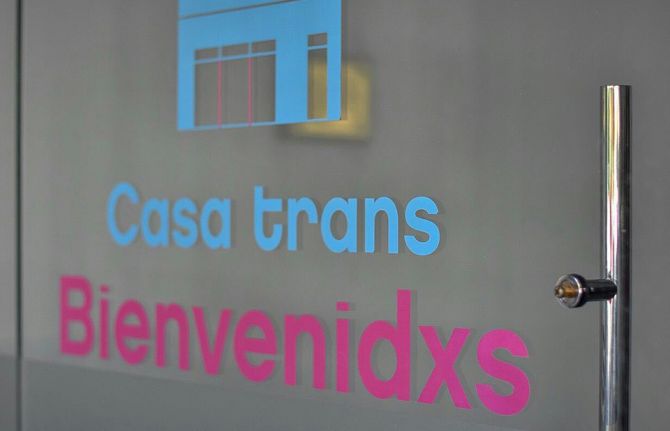
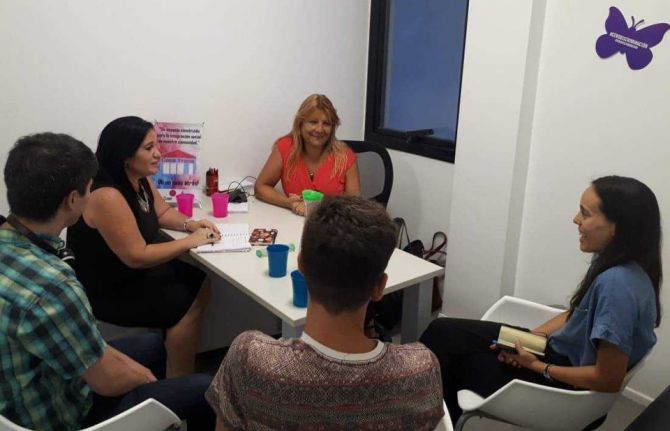
Feature Story
The Transgender House: a community centre for transgender people in Buenos Aires
29 March 2018
29 March 2018 29 March 2018Kimi Avalos is a young transgender woman who lives in Buenos Aires, Argentina. Because of stigma and discrimination, she couldn’t continue with her studies and complete high school. She says that she experienced bullying and harassment; her classmates insulted and physically assaulted her, under the indifferent eye of her teachers. “I really wanted to learn, but I had to drop out of school. Now, thanks to the Transgender House, my dream of finishing high school will soon come true,” said Ms Avalos.
Ms Avalos is one of 30 transgender students who recently started a new educational programme through which they can study for primary and secondary school diplomas by attending a combination of face-to-face and virtual classes. This innovative project is implemented in the Transgender House, a community centre for training and empowerment of transgender people founded in Buenos Aires in June 2017 by Marcela Romero, Coordinator of ATTTA (Association of Argentinian Transvestites, Transsexuals and Transgender) in collaboration with the City Council of Buenos Aires.
“To have this house has meant that as transgender people, we can come out from the darkness. The centre is in a visible space, on one of the main streets of Buenos Aires, in the San Cristóbal neighbourhood. This is our achievement; it shows that we exist as a community and that we have the right to a space like any other organization,” explains Ms Romero.
In Argentina, as well as in the rest of Latin America and the Caribbean, stigma and discrimination undermine learning opportunities and educational achievement of transgender people, thus affecting their future employment prospects. Discrimination and stigmatization also prevent transgender people from accessing appropriate health care, including HIV prevention, social protection and justice services.
In the region, transgender people experience frequent physical and sexual violence and hate crimes. According to data from ATTTA, 20 transgender people have been killed in Argentina since the beginning of 2018 and gender-based violence is increasing. Discrimination, gender-based violence and exclusion also contribute to increasing the vulnerability of transgender people to HIV. Transgender women continue to be heavily affected by HIV.
The Transgender House was created with the aim of providing a safe space where transgender people can be empowered and acquire knowledge and skills without the fear of being discriminated against, rejected or attacked. It works in partnership with governmental agencies, civil society and the private sector to provide a wide range of services and programmes based on the specific needs of transgender people.
MORE ON TRANSGENDER DAY OF VISIBILITY
Voices of activists for transgender rights
Among other initiatives, the Transgender House has established integrated counselling services and professional guidance for job searching, as well as legal advice from lawyers, who are available 24 hours a day. In collaboration with the Ministry of Education, Transgender House has recently begun educational projects that range from the implementation of primary and secondary education programmes to professional training, such as on providing care services to the elderly.
Other important activities include the promotion of prevention of HIV and other sexually transmitted infections, HIV testing and vaccination campaigns. The Transgender House also provides continuous psychological assistance and, through a partnership with Fernández Hospital, counselling services on hormone therapy. In addition, the house engages in outreach work with a team of community health promoters that visit sex workers at their places of work at night, distributing condoms and informative material on HIV prevention.
While the Transgender House is currently a successful project, a point of reference for transgender people in Buenos Aires and has multiple partnerships in the city, it hasn’t been an easy process to get to this point. Ms Romero says that she first approached the Buenos Aires City Council eight years ago, advocating for a space where transgender people could meet. Finally, two years ago, the council approved the remodelling and refitting of one of their buildings, and with the help of an architect and the vision of the ATTTA Coordinator, the Transgender House became a reality.
“The Transgender House is a best practice of community service delivery that is contributing to the achievement of the Fast-Track Targets, leaving no one behind,” said Carlos Passarelli, the UNAIDS Country Director for Argentina, Chile, Uruguay and Paraguay.
Around 400 people visit the Transgender House each month to receive counselling and information and approximately 600 people regularly participate in workshops, group meetings and courses there. “I couldn’t be happier and more grateful for the opportunity that I am given at the Transgender House. I hope that this model of respect and promotion of human rights serves as an example to transform and change society so that all of us can live with dignity,” said Ms Avalos.
Watch video
More in this series
Region/country
Related




Feature Story
Voices of activists for transgender rights
29 March 2018
29 March 2018 29 March 2018For the Transgender Day of Visibility, UNAIDS talked to transgender activists about the challenges they face and the importance of improving the visibility of transgender people.
Erika Castellanos is a transgender woman from Belize who recently moved to the Netherlands to work at GATE (Global Action for Trans Equality) as the Director of Programmes. She has been engaged in transgender and HIV advocacy at the local, regional and international levels.
What are the challenges that transgender people face?
Transgender people are subjected to stigma, discrimination, hate and violence—the number of transgender deaths because of hate crimes is alarming. In many parts of the world, being transgender is criminalized, which makes transgender people invisible in those places and forces them underground.
Many people do not understand what transgender people are, which translates into fear, the cause of stigma and discrimination. From their childhood, transgender people frequently experience rejection by their families, friends and society, finding themselves ostracized.
Why do you think it is important to give visibility to transgender people?
Visibility is power. Only when given visibility can we raise our voices and advocate for the enjoyment of our human rights. Visibility gives us presence, visibility gives us a voice. Ultimately, visibility gives us hope for a better life. Transgender people are an integral part of society who can no longer be ignored.
What do you think of the representation of transgender people by the media?
Almost all media coverage of transgender people is negative, demeaning or focused on the high murder rates and violence that our communities experience. While it is necessary to highlight the violence, negative and demeaning media coverage that dehumanizes transgender people only serves to perpetuate that violence. By portraying transgender people as objects of ridicule, media coverage places our community in further danger of social isolation, rejection from friends and family and violence.
Rena Janamnuaysook is a Thai transgender advocate at the Thai Red Cross AIDS Research Centre. She has extensive local, national and international experience working with HIV organizations.
What are the challenges that transgender people face in your country?
Thai transgender people face multiple challenges. Our country has no gender recognition law. Stigma and discrimination remains a barrier and leads to inequality. A survey conducted in 2015 by the Thai Transgender Alliance and Transgender Europe reported that 50% of transgender people who participated in the survey had a negative experience with health-care providers. In addition, transgender people experienced physical violence and harassment from families and in school and the workplace.
Why do you think it is important to give visibility to transgender people?
It is important to give visibility to transgender people as transgender people are less visible in all aspects of life—family, education, employment, health and the law. The International Day of Transgender Visibility raises public awareness of the needs of transgender people.
How easy is for transgender people in your country to get tested for HIV and get treatment?
A survey conducted by the Thai Ministry of Public Health in 2014 showed that 15% of health-care workers believed that HIV-positive transgender women should be ashamed of their gender identity and HIV status. This resulted in stigma and discrimination in public health facilities and prevented transgender people accessing health-care services, including HIV testing, treatment and support.
MORE ON TRANSGENDER DAY OF VISIBILITY
The Transgender House: a community centre for transgender people in Buenos Aires
Kirit Solanki is an Indian politician who represents the Ahmedabad West constituency of Gujarat.
Can you tell us about your work with transgender people in India?
I trained as a doctor and became a surgeon. A patient came in and said that she had difficulty going to the bathroom. I realized that she was a transgender person and her sex change operation had not been properly done, effectively blocking her urethra. After a successful insertion of a catheter, word got around that I had saved the woman’s life. I suddenly had queues of transgender women come to my clinic with similar conditions.
What did you observe regarding treatment and care for transgender people?
I saw that so many transgender people needed various operations, but I found out that many of them were avoiding clinics and hospitals. When I finally got them to the hospital, they settled in the female ward. Within a day, the other patients complained, so the hospital sent them to the men’s ward. They fared no better there. That’s when it really dawned on me how pervasive discrimination against transgender people is.
What are you and other members of parliament trying to do?
It took 10 years for the Indian parliament to pass the HIV/AIDS bill, which makes life-saving treatment a legal right and criminalizes anyone who discriminates against someone based on their HIV status. We also have reintroduced a transgender persons bill to ensure zero discrimination, legal recognition and access to social services for India’s transgender community. It’s time for people to change their attitude and respect transgender people
Watch video
Related

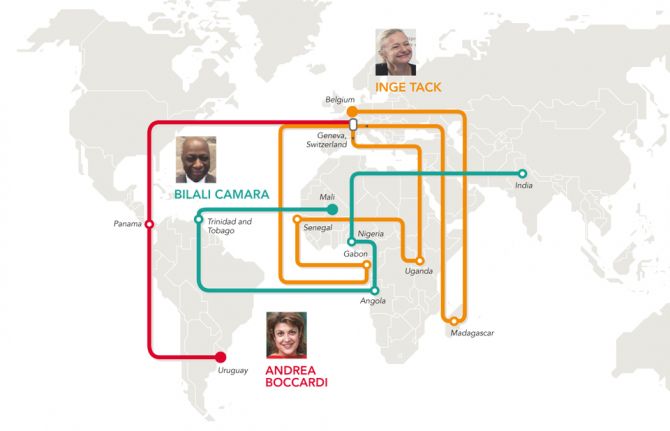
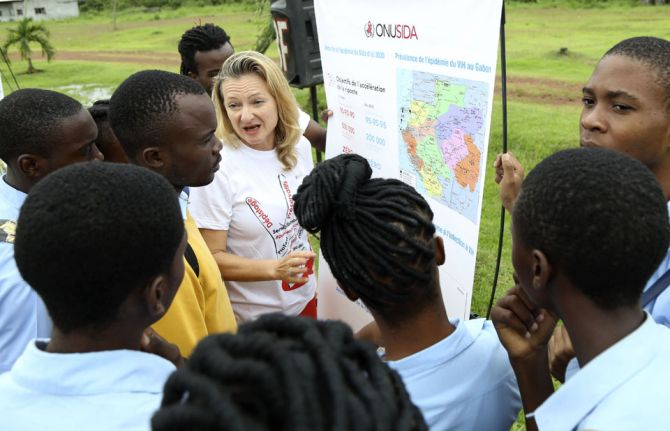
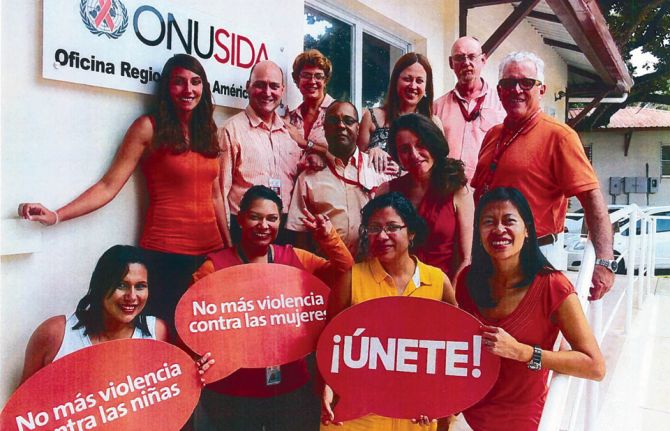
Feature Story
It’s about the people we serve: UNAIDS staff connecting the world
29 March 2018
29 March 2018 29 March 2018“Partnerships, partnerships, partnerships,” said Inge Tack. “That’s what motivates me every morning.”
Partnerships are also her background. When she joined UNAIDS in 1999, she worked on a new initiative, the International Partnership against AIDS in Africa, which involved getting buy-in from governments, the private sector, the United Nations and communities. She then moved to Uganda as the Technical Adviser helping the national AIDS commission with its various constituencies. Ms Tack then headed to western Africa, to the UNAIDS regional bureau to become the Partnerships Adviser.
“I travelled to many of the 19 countries in that region, where travelling is not easy, but I loved the job,” she said. “Supporting country offices, being the broker and convener at the regional level for governments, regional economic communities, donors and people living with HIV in a challenging environment was definitely a huge learning experience,” Ms Tack said. Gaining everyone’s trust was key, she added. She also relished the role because UNAIDS’ neutrality and expertise, she explained, made it the go-to office for HIV.
In 2012, Ms Tack became UNAIDS Country Director in Gabon, allowing her to zero in on one country. “I was the boss of a very small team, but with an enormous scope to do it all,” she said. The variety thrilled her.
“I never had a dull day in Gabon,” she said describing a typical day, which could take her to the presidential palace in the morning, an HIV workshop in the afternoon and an evening meeting discussing health with investors.
Aside from partnerships, she forged real connections with people.
“At the end, it is all about people, giving them hope and encouraging them to help each other,” Ms Tack said. A lot of young people have limited opportunities, so she became a sort of cheerleader for them.
In one case, a young mother living with HIV came to her office saying she could no longer bear her life. Ms Tack sensed that the young woman could perhaps share her story with other teens. “It blew me away how she recounted her tale and connected to people,” she said. Slowly but surely, the young woman gained confidence. The Gabon office helped launch a network for young people living with HIV to raise awareness about HIV prevention and to guide people on adhering to treatment. “And you know what?” she asked. “That woman now has become a community health worker, paid for by the local mayor’s office,” she said beaming.
Ms Tack’s new job in the Programme Partnerships and Fundraising Department has brought her back to Geneva, Switzerland, closer to her native Belgium. Fundraising has changed so dramatically that she wanted to come back to headquarters and refresh her skills. “I believe it’s important to match funds to real country needs,” she said. She also thinks that UNAIDS needs to innovate more on raising funds. Looking up from her computer, she said, “When I feel like I have gotten a good handle on that, then I can return to the country level and put it into implementation!”
UNAIDS staff work in 79 country offices and six regional offices and at its headquarters in Geneva. It also has liaison offices at the United Nations Headquarters in New York and in Washington, DC, United States of America, and at the African Union in Addis Ababa, Ethiopia. The nearly 700 staff members come from 123 countries and more than 60% of the staff work in the field.
Bilali Camara joined UNAIDS in 2008 in Trinidad and Tobago as a Regional Monitoring and Evaluation Adviser. “I had to establish a strong network at national levels across the Caribbean,” he said. This involved a lot of sharing of lessons and problem-solving, he explained. When he moved to Angola as the Country Director, his networks involved fewer people, but he networked tirelessly. He’s particularly proud of having connected a basketball coach with a radio director to air zero discrimination messages. For the next campaign he asked a famous musician, a transgender singer, to help. As a result, he said, they reached thousands of people with HIV awareness messages.
Mr Camara reiterated this endeavour when he became the Country Director in Nigeria. In this instance, he explained, the real push involved lowering the number of babies becoming infected with HIV. Too few pregnant women knew their HIV status and their babies were being missed by HIV services. “We had to reach people, and the best way to do that was contacting them by phone,” Mr Camara said. UNAIDS Nigeria partnered with a telecom company and millions of people received HIV prevention text messages. “With that momentum, HIV testing became part of the prenatal care package in the country,” he said.
Mr Camara said that what keeps him moving forward is people tell him that they appreciate what UNAIDS has done.
Forward and onward he has gone. Mr Camara just became the UNAIDS Country Director in India. What has struck him so far is how involved the key populations are in the AIDS response. “The level of ownership here has truly impressed me,” Mr Camara said. “When it comes to public health, if communities lead the way, then that is a sign of success.”
Success for Andrea Boccardi saw her start out as an obstetrics and gynecology doctor advising Uruguayan Army peacekeeping operations and learning about the HIV policy and programming of the United Nations Department of Peacekeeping Operations. She now focuses on gender-based violence and the elimination of discrimination.
“It’s a dream come true,” she said. “I now have the opportunity to implement the UNAIDS vision of zero discrimination in health-care settings.” Standing in her office, her walls decorated with certificates and photos of Uruguay, Panama and Geneva, she explained how privileged she has felt to have moved around the world and departments.
In 2003, UNAIDS hired her as an HIV Adviser on Security and the Humanitarian Response in Latin America, ending her career as a military doctor. She recalls that her past job came in useful when she trained United Nations peacekeeping troops deploying to Haiti and the Congo.
Two years later she transferred to Panama. Ms Boccardi helped open the UNAIDS regional office, working on programming and technical support. “I did a lot of running around trying to make sure that we were on top of human rights, prevention, treatment and universal access to health,” she said, sighing at the thought of what that entailed.
When her rotation came up, Ms Boccardi said she wanted to move beyond policy and work towards the UNAIDS global prevention agenda to bring change on the ground. Her transition to headquarters in Geneva was seamless. She described her daughters having a tougher time with the French homework, but overall loving the independence that the vast Swiss bus and train system gives them.
In the past 10 years, nearly 500 staff have participated in mobility and more than 400 staff have been reassigned to multiple duty stations. In 2018, about 30 staff members will move from their current posts to new posts.
After working on prevention, Ms Boccardi recently joined the Human Rights and Gender Team.
Pointing to the Spanish words engraved at the bottom of a framed pre-Columbian small gold frog by her desk that read, “Leader, guide, friend”, Ms Boccardi said this had become her mantra in life to balance work, family and friends.
More in this series: UNAIDS staff share global experience on AIDS through criss-crossing the world

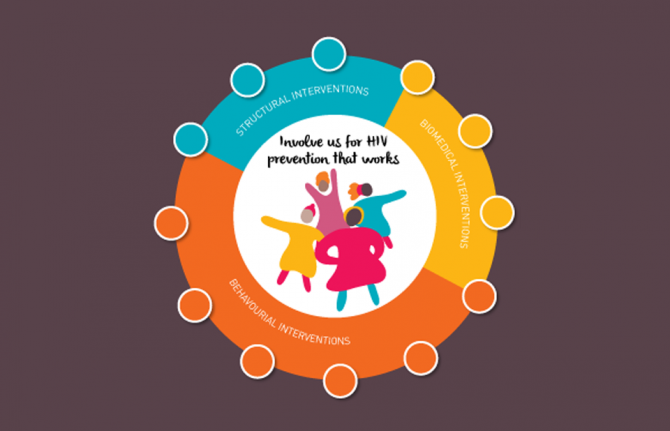
Feature Story
Using social media for a gender-transformative response to HIV
21 March 2018
21 March 2018 21 March 2018During an event held on the sidelines of the 62nd Session of the Commission on the Status of Women, political leaders and activists from the women’s movement and HIV advocacy groups discussed new strategies to engage women and girls in the AIDS response.
Highlighting how technology and media, in particular social media, could be used to enhance the leadership of young women, the participants also discussed how to achieve gender equality in the AIDS response.
The meeting showcased the #WhatWomenWant campaign and how it used social media to mobilize for the United Nations General Assembly High-Level Meeting on Ending AIDS in 2016. As part of the campaign, a feminist blog series, a platform for young female leaders to share their expertise and priorities, was developed. Using WhatsApp groups and Twitter chats, young women were engaged and accessed information on the UNAIDS global guidance on comprehensive HIV prevention. The consultation and sharing using social media resulted in #WhatWomenWant: HIV prevention that works for adolescent girls and young women.
“We have a new generation of young women leaders who use social media to amplify and integrate a feminist leadership to ensure sustainable and transformative results in the AIDS response,” said Catherine Nyambura, from FEMNET, a regional organization of African feminists based in Kenya.
Also during the event, entitled Accountability in Action: Putting Women and Girls in all their Diversity at the Center Through New Social Media, a new report by the ATHENA Network—a global network of 70 partners in more than 35 countries dedicated to advancing gender equality, realizing human rights and building community leadership in the HIV response—was launched. #WhatWomenWant: a toolkit for putting accountability into action gives examples of how to effectively inform and engage young women through digital tools such as WhatsApp, Twitter and Facebook. It also aims to bring a gender-inclusive perspective into developing and implementing policies and programmes and to ensure that young women, including young women living with HIV, can access and contribute to these processes.
“We are looking to digital tools and technologies to evolve the monitoring and accountability agenda in the AIDS response. Our experience can now be shared globally and in real time, unlocking a new world of how we might learn together and deliver,” said Tyler Crone, from the ATHENA Network.
“UNAIDS welcomes the strengthened focus on accountability that has been generated through the #WhatWomenWant campaign. Together, we are committed to working hand in hand to enhance the meaningful participation of women, with a focus on making human rights and gender equality a reality at all levels of the AIDS response,” said Gunilla Carlsson, Deputy Executive Director of UNAIDS.
The meeting, held on 19 March at the United Nations Headquarters in New York, United States of America, was organized by UNAIDS in partnership with the ATHENA Network and #WhatWomenWant partners.


Feature Story
Checking HIV data at every step
22 March 2018
22 March 2018 22 March 2018No disease has the same level of timely and accurate data collection, analysis and distribution as HIV. With credible and up-to-date data, countries and the international community can plan effective AIDS responses. They can focus services on the locations and populations that most need them, increasing impact and decreasing costs.
The responsibility for producing what is acknowledged to be the gold standard information on the global HIV epidemic rests with UNAIDS. For the information to be useful, though, it must be credible. And to be credible, it must be collected properly, thoroughly checked and proven to be accurate.
All HIV-related estimates published by UNAIDS are based on data collected in the countries and communities where the people who are living with and affected by HIV reside. In each country, teams of experts—epidemiologists, demographers, monitoring and evaluation specialists and others—use UNAIDS-supported software called Spectrum once a year to make estimates of the number of people living with HIV, the number of new HIV infections, the number of AIDS-related deaths, the coverage of antiretroviral therapy, etc. The data files produced by the software in the countries are then sent to UNAIDS.
How the data are estimated depends on the nature of the HIV epidemic in the country. In countries where HIV has spread to the general population, data are obtained from pregnant women attending antenatal clinics. In the past, only a sample of pregnant women who went to one of a network of clinics would be tested for HIV as part of surveillance efforts. Increasingly, however, countries have moved to using programmatic data about the level of HIV infection among all pregnant women tested at health facilities. These data, combined with data from nationally representative population-based surveys—which have broader coverage and include men, but are conducted less frequently—are used in the model, together with a set of assumptions, to calculate HIV prevalence, HIV incidence, AIDS-related deaths, the coverage of antiretroviral therapy and more.
Other countries have low-level HIV epidemics. If HIV transmission occurs mainly among key populations (people who inject drugs, sex workers, gay men and other men who have sex with men, transgender people and prisoners), data from HIV prevalence studies—which are usually focused on key populations—are most often used to calculate national estimates and trends. Estimates of the size of key populations are being calculated in more and more countries. If studies are not available, estimates are made based on data from the local region and with agreement among experts. Other sources of data—including population-based surveys and testing of pregnant women—are used to estimate HIV prevalence among the general population. HIV prevalence and the number of people on antiretroviral therapy are then used to derive national HIV trends. An increasing number of countries are using the number of deduplicated HIV case reports to estimate HIV incidence.
UNAIDS doesn’t just take data from countries uncritically and publish, though. The files submitted by the countries are reviewed by UNAIDS to ensure that the results are comparable across regions and countries and over time.
There is also ongoing validation of the Spectrum outputs with other data to check how accurately the estimates match with reality. For example, researchers compared Spectrum data with data on women attending antenatal clinics, census data and population survey data from a study in Manicaland, Zimbabwe. The Spectrum estimates of HIV incidence and prevalence were found to be generally in good agreement with the data, although some discrepancies were found.
In 2016, UNAIDS compared the quantities of medicines exported by generic medicine producers and found those to be broadly similar to programmatic reports of medicine usage and stocks in countries. Also, the recent Population-Based HIV Impact Assessments surveys allow a comparison of the coverage of antiretroviral treatment, as they collect self-reported adherence to antiretroviral therapy and also aim to measure the presence of antiretroviral medicines directly in blood samples. In many countries, the resulting coverage confirms the coverage reported by programmatic data—where results don’t seem to concur, further investigations at the facility level are undertaken. Such research and triangulations help to make data more precise and refine the Spectrum model.
How well estimates on access to antiretroviral medicines agree can be seen in the two graphs on HIV treatment in South Africa. The first shows how close the procurement data for antiretroviral medicines match the number of people reported to be accessing the medicines. The second shows how the UNAIDS estimate of the percentage of people living with HIV accessing HIV treatment agrees with the percentage estimated by the South Africa Human Sciences Research Council in 2012.
There are several situations in which UNAIDS won’t publish data, because of uncertainty around the quality of the information. For example, UNAIDS does not give estimates in some countries that have concentrated epidemics of mother-to-child transmission of HIV and of the number of children living with HIV unless there is proper supporting evidence. Where historical data can’t back up trends in HIV incidence, UNAIDS doesn’t publish the past data. And UNAIDS also doesn’t publish country estimates if further data or analyses are needed to produce valid estimates.
The integrity of UNAIDS data is also ensured through an annual update of the Spectrum model. The model is refined as new data become available, such as updated information on the probabilities of mother-to-child transmission of HIV, the age at which children start antiretroviral therapy, age and sex patterns of HIV infection, the effectiveness of antiretroviral therapy in reducing mortality and incidence, etc. These changes in the model can, however, lead to changes in estimates for both the current year and past years, resulting in the need to issue a full new set of historical data each year.
By continually refining the data collection and validation process, UNAIDS is making sure that the data it publishes continue to be valued and respected by the people and organizations that are working towards ending AIDS by 2030.
AIDSinfo
Publication
Resources
Related


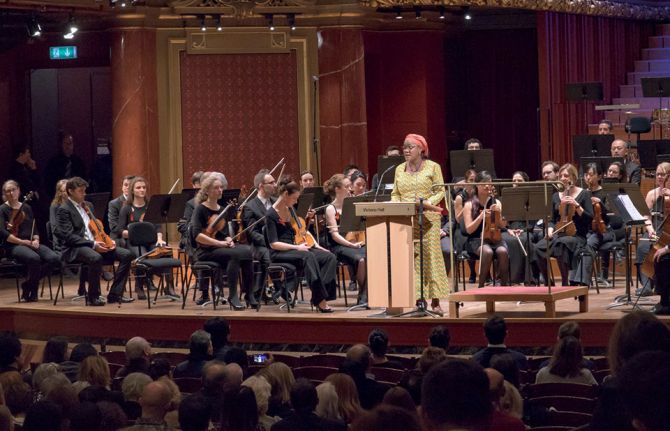
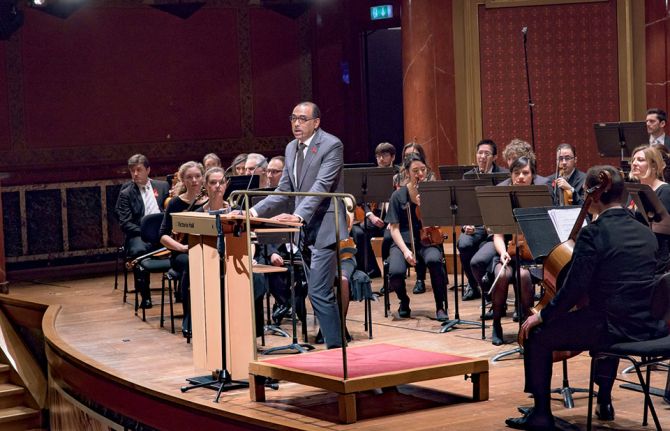

Feature Story
Concert to support the work of UNAIDS in South Africa
20 March 2018
20 March 2018 20 March 2018Acclaimed Japanese violinist Rennosuke Fukuda took to the stage with the United Nations Orchestra in Geneva, Switzerland, on 17 March at a special event to raise funds for the work of UNAIDS in South Africa and to celebrate the centenary of the birth of Nelson Mandela.
“Nelson Mandela helped to break the silence around HIV. Today there are 4.2 million people on treatment in South Africa. In 2000, there were just 90 people on treatment through public sector facilities. We need leaders like this to support us to end the AIDS epidemic,” said Michel Sidibé, Executive Director of UNAIDS.
South Africa has the largest HIV epidemic in the world. In 2016:
- 7.1 million people were living with HIV in South Africa.
- 270 000 people became newly infected with HIV.
- 110 000 people died of AIDS-related illnesses.
Michael Møller, Director-General of the United Nations Office at Geneva and Honorary President of the United Nations Orchestra, welcomed the guests to the event and spoke of the qualities of Mr Mandela, which resonate today more than ever. “The power of constructive action and ideas, the importance of reason and argument, of forgiveness and reconciliation, the need for compromise—without undermining the core principles of dignity and equality,” he said.
During the evening, the 800-strong audience was transported on a journey to the wild Scottish coastline in The Hebrides overture by Felix Mendelssohn before being whisked into the world of The Thousand and One Nights as depicted by Nikolaï Rimsky-Korsakov in his Symphonic Suite, Scheherazade. Mr Fukuda, who won international acclaim after being awarded first prize in the junior category of the prestigious Menuhin Competition in 2014, gave an outstanding rendition of the famous violin concerto by Mr Mendelssohn.
“Both Nelson Mandela and Yehudi Menuhin were giants of the 21st century. They were great friends and had similar philosophies, similar beliefs,” said Gordon Back, Artistic Director of the Menuhin Competition. “Yehudi Menuhin once said, the antidote to violence is simple, just listening instead of shouting, seek to understand and communicate with each other.”
Yehudi Menuhin met Mr Mandela in 1996 when Mr Menuhin travelled to Johannesburg, South Africa, with more than 200 violins to give to young South Africans from disadvantaged backgrounds with the aim of teaching them music as part of the Violins for Africa programme. The two inspirational figures shared many humanist values.
“Nelson Mandela could move hearts and move minds, change the way we view others, deal with issues of discrimination,” said Sello Hatang, Chief Executive of the Nelson Mandela Foundation. “As we play music tonight, in his honour, may we give hope to those who just want to be given the opportunity to live.”
The event was organized by the United Nations Orchestra in partnership with UNAIDS, the Menuhin Competition and the South Africa Permanent Mission to the United Nations in Geneva.
South Africa’s Ambassador to the United Nations in Geneva, Nozipho Joyce Mxakato-Diseko, also attended the event, along with the Ambassadors of Benin, Botswana, Djibouti, Ethiopia, Namibia, Sierra Leone and Switzerland. The concert is part of a series of events being held in Geneva during 2018 to mark the centenary of the birth of Mr Mandela.

Feature Story
A big year ahead for TB
19 March 2018
19 March 2018 19 March 2018The year 2018 is critical for the international community as it pushes progress towards ending the global tuberculosis (TB) epidemic by 2030 as part of the Sustainable Development Goals.
In September 2018, United Nations Member States will come together in New York for the United Nations High-Level Meeting on Tuberculosis to show their political leadership and commitment to ending TB by 2030. Some of the main challenges in the response, including the need for equity and to ensure vulnerable groups have access to TB services, will be addressed at the high-level meeting, as will the need to make TB testing and treatment available through primary health-care services and the urgent need to mobilize resources.
In preparation for this historic event—the first ever United Nations high-level meeting on TB—leaders from across the globe converged in New Delhi, India, on 14 and 15 March, for the End TB Summit, part of which was the 30th Stop TB Partnership Board Meeting.
A large number of global leaders on TB gathered at the meeting. J. P. Nadda, the Union Minister of Health and Family Welfare, India, said during the event, “We will ensure that commitments to end tuberculosis made are fulfilled. Achievement of the goals will need innovations as well as new implementation ideas. India stands committed to support neighbouring countries in the fight against the disease.”
In 2016, the estimated funding gap for TB programming was US$ 2.3 billion. In addition, there was a US$ 1.2 billion shortfall in TB research and science. The urgent need for increased investments in innovation will be highlighted in the lead-up to the high-level meeting as part of efforts to bring 21st century diagnostics and treatments and a vaccine to the response to TB.
“Leaders across the globe need to seize this opportunity, make bold commitments and take a resolve to see the end of tuberculosis on a fast track. Actions to follow the commitments will need bold actions by health ministries, other ministries, the private sector, civil society and communities,” said Isaac Folorunso Adewole, the Minister of Health of Nigeria.
TB has been around for thousands of years, yet TB still remains a major global health crisis. The World Health Organization estimated that in 2016 around 1.3 million people died of TB and that a further 400 000 people living with HIV died from TB/HIV coinfection (reported globally as AIDS-related deaths).
“We cannot eliminate tuberculosis with only a top-down approach. We must work together to empower communities to support the fight against tuberculosis. This movement must go far beyond the medical community,” said Soumya Swaminathan, the Deputy Director-General of the World Health Organization.
People living with HIV are particularly affected by TB. One in 10 TB cases occurs among people living with HIV and one in four TB deaths is associated with HIV. Despite being preventable and curable, in 2016 TB was the ninth leading cause of death worldwide.
“There are a lot of people still not accessing treatment. We need to look at strategies to increase access to care, particularly for those most marginalized and not accessing care right now,” said Tim Martineau, the Deputy Executive Director, a.i, at UNAIDS.
UNAIDS and the Stop TB Partnership have a long-standing collaboration working together to advocate for, monitor and support programmes for people and countries affected by the joint global TB and HIV epidemics. The Stop TB Partnership Board provides leadership and direction, monitors the implementation of agreed policies, plans and activities of the partnership and ensures smooth coordination among Stop TB Partnership components.

